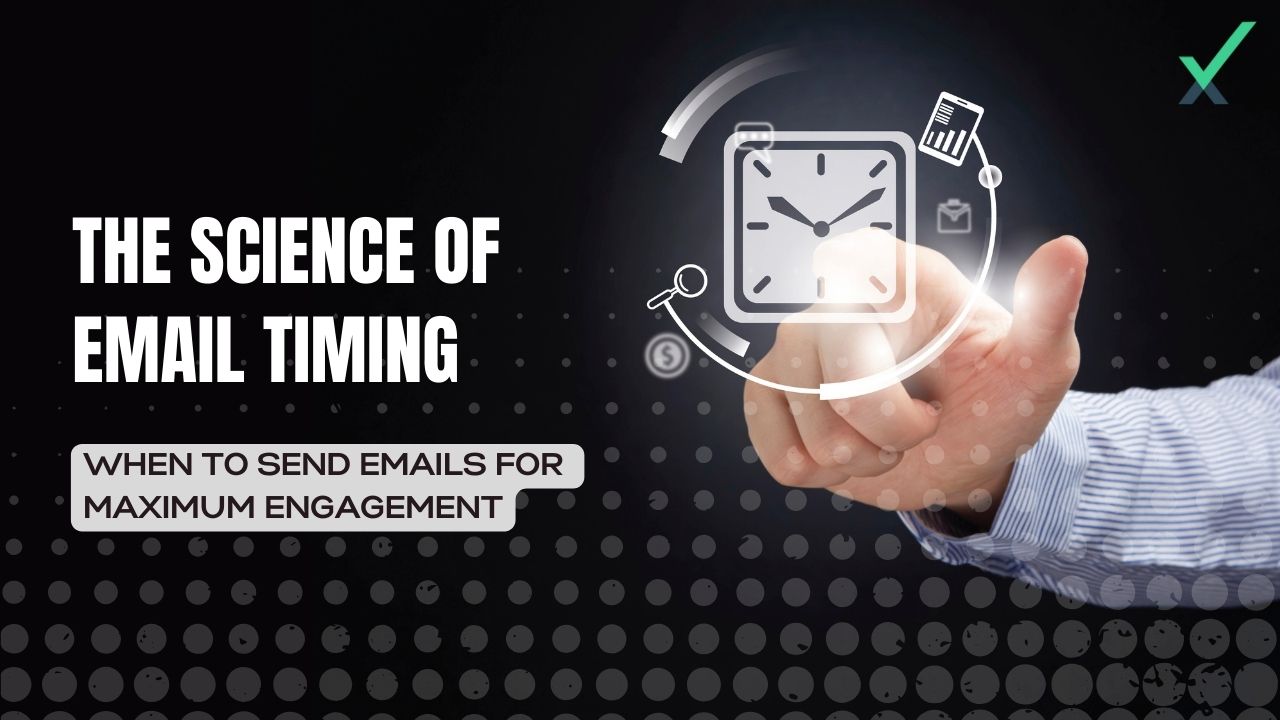Timing plays a crucial role in the success of your email marketing campaigns. Sending emails at the right moment can significantly impact engagement and conversion rates. In this blog, we'll delve into the science of email timing and provide valuable insights on when to send emails for maximum engagement. We'll also explore the bulk email verifier tool, cold email SMTP options, and the best email marketing automation software to enhance your email marketing strategy.
Step 1: Know Your Audience's Habits
Understanding your audience's behavior and preferences is the first step in determining the best time to send emails. Consider factors such as geographic location, industry, and demographics. Use analytics to track open rates and engagement metrics to identify patterns and trends.
Example: If you are targeting working professionals, sending emails during peak hours may result in lower open rates as their inboxes are bombarded. Instead, consider scheduling emails during lunch breaks or early evenings.
Step 2: Experiment with Different Time Zones
If your target audience spans across various time zones, it's important to adapt your email timing accordingly. Test different send times for different time zones to determine the optimal timing that generates the highest engagement rates.
Example: If you have subscribers in different countries, segment your email list based on their time zones and schedule emails to reach each segment at the most convenient time for them.
Step 3: Leverage Data and Analytics
Utilize data and analytics to gain insights into your audience's behavior, preferences, and engagement patterns. Pay attention to open rates, click-through rates, and conversion rates to identify trends and make data-driven decisions.
Example: Analyze past email campaigns to identify the days of the week and specific hours that have consistently shown higher engagement rates. This information can serve as a starting point for timing your future campaigns.
Step 4: Implement Email Marketing Automation Software
Email marketing automation software streamlines your email campaigns and enables you to schedule emails in advance. These tools provide features such as A/B testing, segmentation, and scheduling options, allowing you to optimize your email timing and improve engagement.
Example: Consider using popular email marketing automation software like Mailchimp, Sendinblue, or ActiveCampaign, which offer advanced scheduling features to ensure your emails are delivered at the right time.
Step 5: Verify Your Email List
To ensure your emails reach the intended recipients and boost engagement, it's essential to verify your email list using a bulk email verifier tool. This tool helps you maintain a clean and up-to-date email list, reducing bounce rates and improving deliverability.
Example: Utilize a reliable email verifier online unlimited tool to verify the validity and accuracy of your email addresses before sending out your campaigns.
Conclusion:
Timing your email campaigns strategically is essential for maximizing engagement and achieving your desired results. By understanding your audience's habits, leveraging data and analytics, utilizing email marketing automation software, and verifying your email list, you can enhance your email marketing strategy. Experiment with different timing strategies, track performance, and adapt your approach accordingly. Incorporate these techniques into your overall email marketing strategy, and maximize engagement for optimal results. Learn more from the best cold email marketing agency in the USA.



